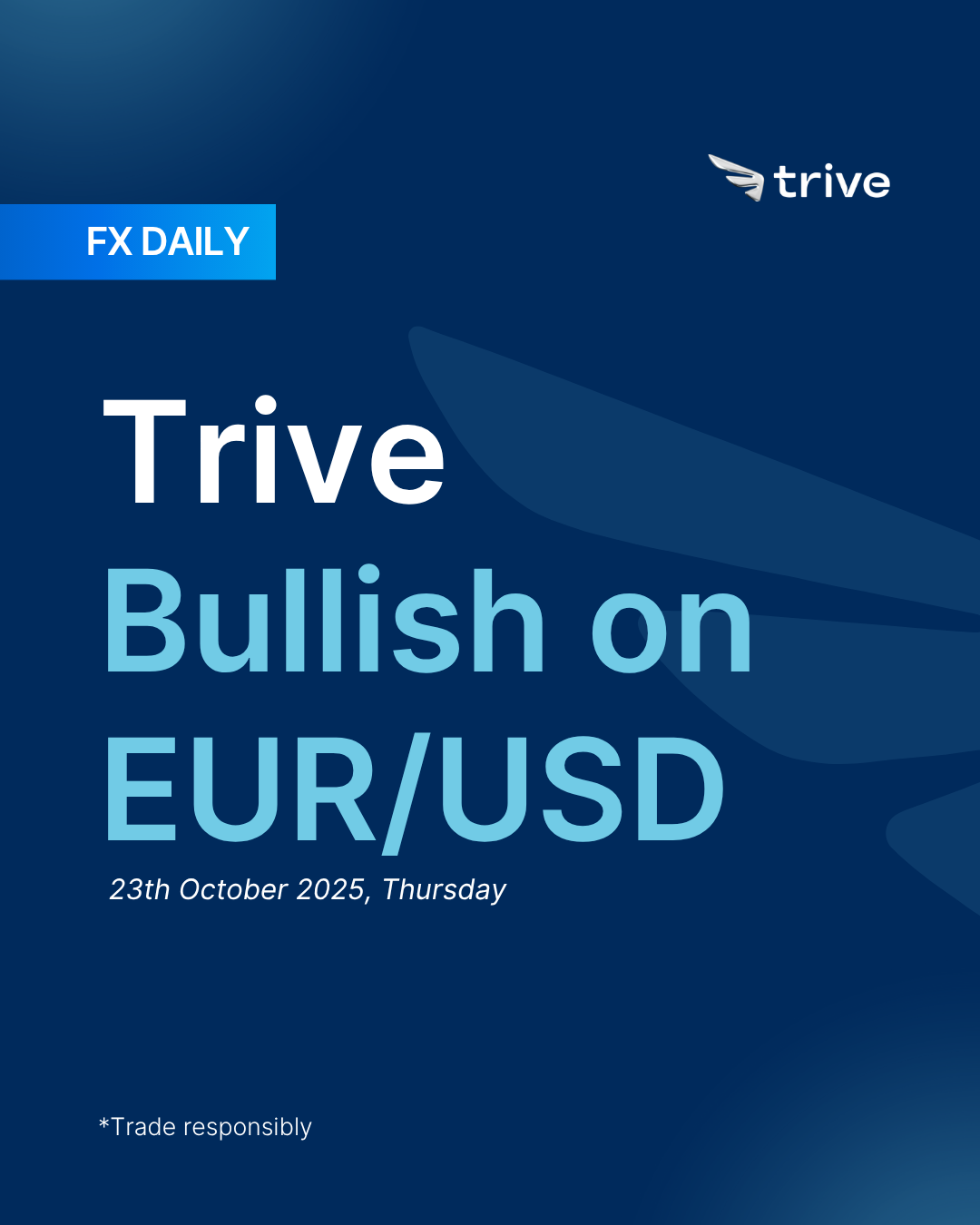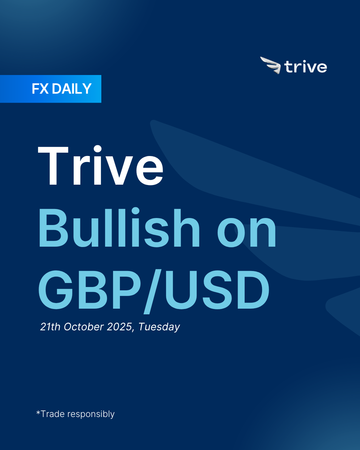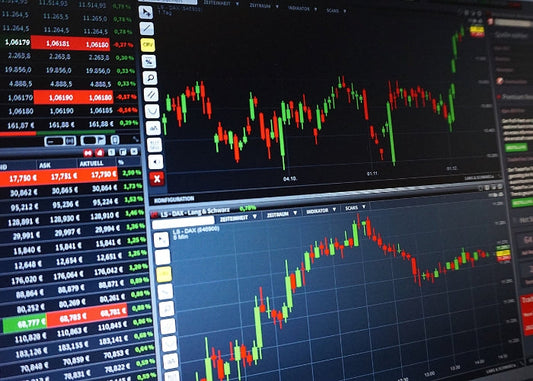FX Daily: Trive Bullish on EUR/USD

The euro ended the week as one of the strongest majors, fueled by sharply reduced French political risk and a stable ECB stance, while USD momentum softened after a volatile, risk-driven week. Political clarity in France and tightening OAT–Bund spreads restored investor confidence in the eurozone, giving EUR/USD a solid base above 1.16. With the Fed signaling an earlier end to balance sheet reduction and US data visibility clouded by the shutdown, yield spreads are tilting back toward the euro’s favor.
EUR: Short term strength
The Euro was one of the week’s strongest performers, supported almost entirely by a significant reduction in French political risk. The single currency began the week on uncertain footing, with EUR/USD struggling to hold above 1.1600 amid concerns over the stability of Prime Minister Lecornu’s newly formed government and anticipation surrounding the upcoming budget presentation. Fears of a no-confidence vote and the possibility of snap elections weighed heavily on sentiment.
Mid-week, the narrative shifted sharply after Lecornu announced the suspension of the controversial pension reforms, a key concession that secured crucial support from opposition parties. This decision proved pivotal, and on Thursday, his government comfortably survived two no-confidence motions, one from the far-left and another from the far-right. The easing of political tensions sparked a rally in French assets and lifted the Euro, with EUR/USD breaking decisively above 1.1600 and reaching a multi-week high of 1.1728 on Friday. The rally eventually faded later in the week as a broad rebound in the US Dollar pulled the pair back below 1.1700.
The main driver was political de-risking in France. Early in the week, betting markets had placed the odds of snap elections before year-end above 50%, but after Lecornu’s policy shift and parliamentary victories, those odds dropped to around 23%. The improvement in political stability was reflected in French bond markets, with the OAT-Bund 10-year yield spread tightening from about 85 basis points to 75 basis points.
Economic data played a secondary role, as markets focused primarily on politics. The German ZEW Economic Sentiment index for October missed expectations, coming in at 39.3 versus the expected 41.0, while the Current Conditions component worsened to -80.0, showing continued pessimism in Germany’s economy. The data had little market impact. Final Eurozone inflation figures for September were confirmed at 2.2% year-over-year, matching preliminary estimates and providing no fresh impulse for trading.
From a policy standpoint, the European Central Bank maintained a consistent message. President Lagarde, along with officials such as Nagel, Vujcic, and Villeroy, reiterated that policy is in a “good place” and that there is no need for immediate action. While some, like Villeroy, acknowledged that the next rate move is likely to be a cut rather than a hike, they emphasized that this would not happen soon and that more data, particularly regarding US tariffs and services inflation, would be needed before considering any adjustment. Market pricing remained stable, with no rate changes expected by the end of the year.
The euro extended its rebound last week, buoyed by a sharp reduction in French political risk and a period of relative calm in spreads. Early weakness quickly gave way to strength as Prime Minister Lecornu’s concessions defused the threat of a no-confidence vote, tightening OAT–Bund spreads and restoring investor confidence. Softer US data and Fed-dovish pricing amplified the move mid-week before the euro eased slightly into Friday as the dollar regained footing. Despite the late pullback, it was one of the best-performing majors on the week.
Near term, weak bullish. The euro enters the new week with its footing more secure as political risk in France recedes and relative rate stability returns. Market focus is likely to shift back to policy tone and incoming activity data. With the ECB messaging unified around “patience,” the bias remains modestly constructive provided global sentiment stays calm. The main driver is still the relative policy divergence between the ECB and the Fed—markets are now confident the ECB will hold steady for longer, while the Fed’s pivot toward easing remains in focus. The upcoming flash PMIs and Lagarde’s two speeches will be key in gauging whether growth expectations can stabilize. Barring a renewed flare-up in French or Italian politics, or a surge in the dollar from stronger US data, the bias leans weakly bullish as the euro consolidates above recent support. A decisive deterioration in PMIs or renewed spread widening would, however, quickly soften this stance toward neutral.
Longer term, weak bullish. The medium-term picture continues to tilt mildly constructive. The euro retains a relative advantage as the ECB maintains its cautious hold while the Fed edges closer to cutting. The eurozone’s external balances remain healthy, and the easing in French political tensions reduces fragmentation risk, restoring confidence in the bloc’s fiscal stability. Growth momentum remains uneven, but with energy costs contained and inflation slowly normalizing, the backdrop still supports gradual recovery. Sustained improvement in services activity and wage data would strengthen the case for a firmer euro bias, whereas persistent weakness in German industry or renewed fiscal instability in peripheral economies would temper it.
If the broader narrative changes, whether through a sudden revival in US growth and yields, renewed tightening in financial conditions, or an unexpected shift in ECB guidance toward easing the current constructive bias could unwind quickly. In that case, we would lean back toward a weaker euro until the data or market pricing realign with a more supportive macro backdrop.
USD: Short at rally
The US Dollar had a volatile week driven by a dramatic mid-week pivot in risk sentiment centered on the US financial system. The DXY started the week on a soft footing, falling below 99.00 as markets reacted to dovish remarks from Fed Chair Powell, who hinted at an early end to the central bank’s balance sheet reduction. This narrative was abruptly disrupted on Thursday by a sharp risk-off move, after reports of bad loans and alleged fraud at regional banks Western Alliance (WAL) and Zions (ZION) reignited fears of a credit crisis. The dollar dropped to a weekly low near 98.30 as traders priced in aggressive Fed rate cuts, which sent haven currencies like the JPY and CHF soaring.
However, sentiment completely reversed on Friday. A wave of strong earnings reports from other regional banks calmed credit fears, while President Trump adopted a softer tone on China, saying high tariffs would “not stand” and confirming a meeting with President Xi. This triggered a powerful risk-on wave that led to a sell-off in Treasuries and gold, allowing the dollar to recover part of its losses and close the week near 98.40.
Regional PMIs delivered a mixed picture, as the government shutdown delayed major data releases. The NY Fed Manufacturing Index on Wednesday surprised with a jump to 10.7 compared to expectations of -1.4, showing solid growth in new orders and employment. On the other hand, the Philly Fed Business Index on Thursday collapsed to -12.8 from an expected 8.5, fueling that day’s risk-off sentiment. The Fed’s Beige Book released on Wednesday described economic activity as “little changed,” noting a muted labor market but rising labor cost pressures, suggesting stagflationary undertones. On Friday, a Bloomberg analysis of state-level data suggested initial jobless claims fell to around 215,000, pointing to a resilient labor market despite being an unofficial figure.
Fed Chair Powell set the dovish tone early in the week by signaling the possible end of quantitative tightening “in the coming months,” which weighed on the dollar as it implied more liquidity ahead. Fed Governor Waller reinforced easing expectations by saying a 25bps cut in October would be “justified,” with further moves depending on incoming data. Dovish comments from Governor Miran and Philly Fed President Paulson added to this narrative. Following the banking scare, markets repriced Fed expectations sharply, fully pricing in two 25bps rate cuts by December, totaling 50bps of easing.
Trade and geopolitical developments also played a major role. The week began with President Trump softening his stance after his weekend threat of 100% tariffs on Chinese goods. Tensions escalated mid-week when China announced countermeasures against US firms but quickly eased after Trump stated that high tariffs were “not sustainable” and confirmed a meeting with President Xi in two weeks, fueling Friday’s rally. Trump’s Thursday phone call with Russian President Putin, described as “very good and productive,” led to plans for high-level staff meetings and helped further reduce geopolitical tension. Earlier in the week, the release of all living Israeli hostages by Hamas was a positive geopolitical event, though it was later overshadowed by US financial news.
Market sentiment was dominated by the regional banking scare on Thursday, when shares of Western Alliance and Zions plunged after disclosures of loan-related fraud. This sparked a flight to quality that sent the KRE regional banking ETF down over 6%, crushed equities, and drove strong gains in gold, Treasuries, and haven currencies. On Friday, the panic reversed as solid earnings from other regional banks like TFC and ALLY eased contagion fears. Combined with Trump’s conciliatory comments on China, risk appetite returned strongly. Gold reflected this shift perfectly, hitting a new record high above $4,370 per ounce during Thursday’s panic before falling more than $180 as risk-on sentiment dominated on Friday.
The dollar endured another turbulent week, whipsawed by shifting narratives around the Fed’s stance and a brief US financial scare. It started on a weak note as dovish remarks from Chair Powell and other officials pushed rate cut expectations higher, but the mid-week panic over regional banks temporarily halted the decline as traders pared back extreme positioning. By Friday, relief in banking stocks and Trump’s conciliatory tone toward China restored risk appetite, leaving the dollar modestly lower overall but far from last week’s lows.
Near term, weak bearish. The main driver remains global risk sentiment, which continues to overshadow domestic fundamentals. While last week’s mid-week volatility briefly interrupted the dollar’s slide, it was JPY and CHF that drew true defensive demand, showing that the USD’s traditional “safety bid” no longer dominates when the shock is US-centered. Domestically, markets look to CPI and PMIs for confirmation of whether growth and inflation momentum can justify the Fed’s dovish tilt. Front-end yields remain soft, and Powell’s reluctance to challenge easing expectations leaves the dollar vulnerable to further repricing. Unless incoming data or Fed communication reassert a firmer policy stance, the mix of gentler US yields and recovering global risk appetite should keep the bias weakly bearish. Only a meaningful upside inflation surprise or renewed stress in credit markets would be enough to shift the tone toward neutral.
Longer term, weak bearish. The broader setup still points to gradual USD underperformance as the Fed transitions toward rate cuts amid cooling growth and fading inflation pressure. The dollar’s carry appeal is diminishing as peers stabilize policy rates, while twin deficits and softer capital inflows continue to weigh on the medium-run picture. Seasonal factors offer some support, but not enough to counterbalance structural headwinds. A sequence of stronger data or a decisive hawkish turn from the Fed could lift the stance toward neutral, yet absent that, the bias remains for a softer dollar as relative rate support erodes and global investors diversify away from the US. If the Fed’s tone turns firmer or inflation re-accelerates meaningfully, this weak bearish view could reverse quickly, prompting renewed USD strength until data or market pricing confirm a sustainable cooling in the cycle.
 EUR/USD 4H
EUR/USD 4H
Disclaimer
This material is provided for informational purposes only and does not constitute financial, investment, or other advice. The opinions expressed in this material are those of the author and do not necessarily reflect the views of Trive International. No opinion contained in this material constitutes a recommendation by Trive International or its author regarding any particular investment, transaction, or investment strategy. This material should not be relied upon in making any investment decision.
The information provided does not consider the individual investment objectives, financial situation, or needs of any specific investor. Investors should seek independent financial advice tailored to their individual circumstances before making any investment decisions. Trive International shall not be liable for any loss, damage, or injury arising directly or indirectly from the use of this information or from any action or decision taken as a result of using this material.
Trive International may or may not have a financial interest in the companies or securities mentioned. The value of investments may fluctuate, and investors may not get back the amount they originally invested. Past performance is not indicative of future results.
For more information about Trive International, please visit http://trive.com/int
Additional Information
Investing involves risk, including the potential loss of principal. Diversification and asset allocation strategies do not ensure a profit or guarantee against loss. The content in this material is subject to change without notice and may become outdated or inaccurate over time. Trive International does not undertake any obligation to update the information in this material.
By accessing this material, you acknowledge and agree to the terms of this disclaimer. If you do not agree with these terms, please refrain from using this information.
No comments
Home
Trive
TriveHub




0 comments